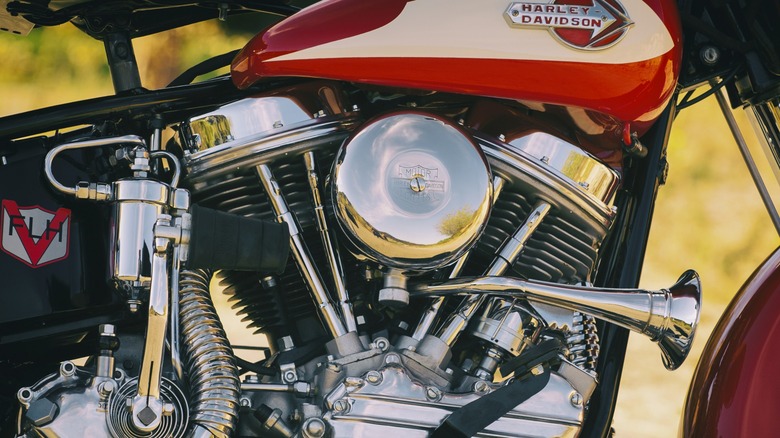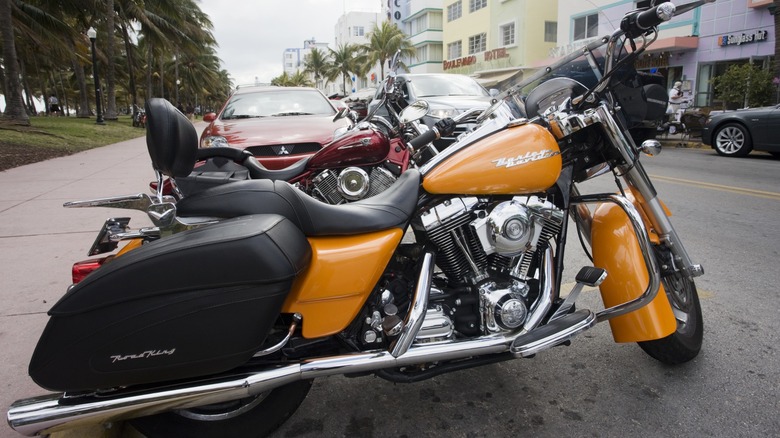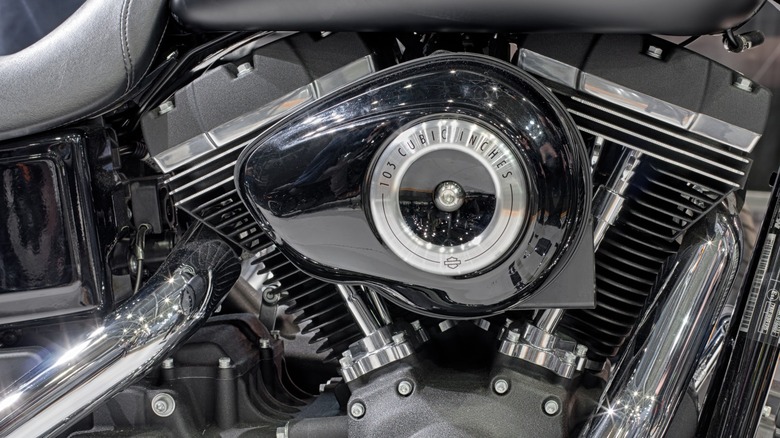The Biggest Problem With Harley-Davidson's Early Big Twin Engines
Harley-Davison motorcycles are known for their use of big V-twin engines. The company's proprietary engine design has come a long way since the introduction of the first 49.5 cubic-inch version in 1909. Over time, V-twin engine varieties included some of the best Harley-Davidson engines ever made, such as the Flathead, Knucklehead, Panhead, Shovelhead, Evolution, Twin Cam, and Milwaukee-Eight. However, there were some issues along the way.
Introduced in 1936, the Knucklehead represents a major milestone by introducing the Harley-Davidson V-twin faithful to overhead valves. The use of OHV technology wasn't new to Harley-Davidson, the company produced OHV singles for its motorcycles and V-twins for racing. However, there were issues with failed valve springs, valvetrain oiling, and oil leakage that required HD to supply dealer repair kits for over 1,000 Knuckleheads already in service.
Engine oil consumption would be problematic in early Panhead V-twins, but by the early 1980s, oil puddles beneath Harley-Davidson engines were a rare sight, according to Cycle World. There are also reports of excessive valve lash and oil starved tappets causing premature wear. The introduction of the Twin Cam 88 as a replacement for the Evolution engine that powered some of the most successful Harley-Davidson motorcycles would introduce new issues.
What's so bad about the Harley-Davidson V-twin Twin Cam 88?
Some might argue the Twin Cam 88 engine, notably the first-gen TC88A, started off on the wrong track by replacing the popular Evolution V-twin. However, the Harley-Davidson Twin Cam TC88A V-twin engine is particularly problematic, presenting some unique issues due to its design.
In 1998, Cycle World reported that Harley-Davidson's attempts to strengthen the Evolution engine's weak crankshaft resulted in cracked engine cases. The remedy was to move the camshaft farther from the crank to allow larger main bearing journals. With that, a complete V-twin engine redesign was needed, and the twin cam configuration provided the required space for a larger crankshaft bearing.
The biggest Twin Cam 88 issues relate to the use of plastic timing chain tensioners, excessive engine heat, and crankshaft runout. In addition, the notorious oil leaks returned to the TC88A V-twins. However, while it's a common issue, it's a relatively minor inconvenience compared to its other problems.
Ways to avoid the biggest V-twin engine problems
One of the easiest ways to avoid the issues with a problematic V-twin engine is buying a motorcycle that doesn't use one. However, you don't necessarily have to swear off buying a Harley-Davidson to avoid the most common culprits. S&S Cycle recommends looking at Harleys besides those equipped with 1980s Evolution engines and TC88A V-twins produced between 1999 and 2006.
This leaves the 1990s Evolution, Twin Cam 96 and 103, and the improved TC88B as better options. But if you find yourself in possession of a TC88A V-twin Harley-Davidson there's still hope.
While the crankshaft runout issue could require an engine replacement or rebuild, it's a rare occurrence. Excessive engine heat causes rider discomfort, especially in slow traffic and stop lights. The problem is at least partially mitigated by adding an aftermarket fan-assisted oil cooler.
The stock chain tensioners are the biggest issue of Harley-Davidson Twin Cam engines. As the plastic tensioner foot pushes on the timing chain the softer plastic can shave off particles that make their way into the oil reservoir. This could eventually lead to blocked oil passages or oil pump failure and a seized engine. While upgraded timing chain tensioners are available, aftermarket gear drive systems eliminate the plastic tensioner components completely, but they may be illegal for use on some models and in some states.


